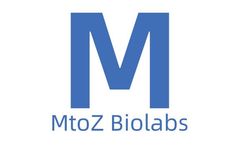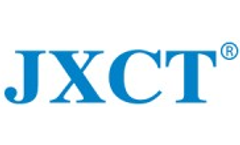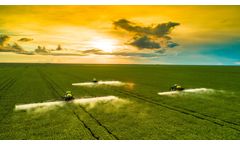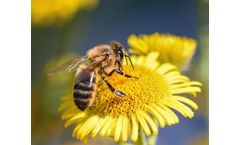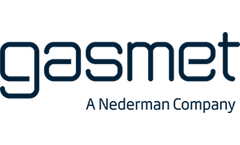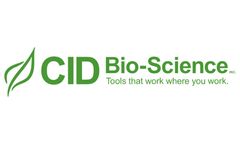Refine by
Spectroscopy Articles & Analysis
50 articles found
Future Directions Emerging techniques such as liquid chromatography-mass spectrometry (LC-MS) and infrared spectroscopy are gaining traction for rapid and non-destructive fatty acid analysis. ...
Nuclear Magnetic Resonance (NMR) Spectroscopy: NMR provides detailed structural information and dynamics of hormone molecules, aiding in the understanding of their interactions within plant systems. ...
Due to its high sensitivity and non-destructive nature, it has become an important technique for the analysis of agrochemicals. By utilizing NMR spectroscopy, researchers can gain valuable insights into the structure, composition, and behavior of these chemicals in various environmental conditions. ...
Bovine Serum Albumin (BSA) is a standard protein frequently used in biological experiments. It is the main protein component isolated from bovine serum. Because of its abundant presence and stable nature, BSA is often used as a control standard in experiments, such as in protein concentration determination, enzyme-linked immunosorbent assays (ELISA), and other biochemical and molecular biological ...
What is Leaf tissue testing? Leaf tissue testing is a crucial process for evaluating the concentration of essential elements within plant tissue. Essential nutrients, categorised as micronutrients and macronutrients, play key roles in sustaining the plant’s life cycle. Micronutrients, required in smaller amounts and macronutrients needed in larger amounts are essential for achieving ...
Why is it important to have a high-quality feed? The quality of ruminant feed is directly linked with milk production, animal health, as well as farm performance. As feed costs represent a significant number of the total production costs, it is crucial to ensure feed nutritional values and quality throughout the whole year. Therefore, the intake of superior quality TMR and silages can help to ...
Pheromone activity screening service is provided with advanced analytical techniques including Gas Chromatography-Mass Spectrometry (GC-MS), Liquid Chromatography-Mass Spectrometry (LC-MS), and Nuclear Magnetic Resonance (NMR) Spectroscopy to identify and isolate the components of pheromone blends. ...
These sensors utilize advanced technologies, such as spectroscopy, to analyze soil samples and provide real-time data on nutrient levels. ...
ByJXCT
Ideally, such sensors should be capable of automated, online data collection and logging to avoid the need for labour-intensive, regular measurements and so that datasets are not distorted by daily or seasonal fluctuations in emissions levels.Particularly for monitoring livestock emissions, it is important that measurements can be made as part of the animals ‘daily routine’ without the need for ...
Chemical Analysis of Pollen by FT-Raman and FTIR Spectroscopies, Front. Plant Sci., 2020, 11, 1-19. Bagcioglu, B. Zimmermann and A. ...
In 1990, Finnish shelter and blast resistant and gastight door manufacturer Finntemet acquired the Fourier Transform Infrared spectroscopy or FTIR business of Scanoptics and Temet Instruments – which later became Gasmet – was born. ...
Crocombe, hand-held spectrometers have historically been used by only small groups of people, such as analytical and drug companies. These days, spectroscopy is available in simple low cost devices for a multitude of applications for scientists and non-scientists alike. One of the most prominent uses of spectroscopy has been the use of the technology on leaves ...
Given the usefulness of DM as a measure of fruit quality and taste, other techniques are necessary to estimate it in the field. Near infrared (NIR) spectroscopy is a non-destructive method to use on fruit to estimate their DM levels without affecting produce in any way. ...
The incoming and outgoing CO2 from the leaf chamber is measured by infrared spectroscopy with an infrared gas analyzer. The difference gives us the amount of CO2, from which the rate of photosynthesis can be calculated. ...
The incoming and outgoing CO2 from the leaf chamber is measured by infrared spectroscopy with an infrared gas analyzer. The difference gives us the amount of CO2, from which the rate of photosynthesis can be calculated. ...
The surface of adsorbent before and after the removal of dyes was characterized by using scanning electron microscopy (SEM) and Fourier transform infrared spectroscopy (FTIR) analysis. The study suggested that PGSC biochar could be used as a highly efficient adsorbent for the removal of synthetic dyes. ...
Modification on the surface of PGCM was characterized by Fourier transform infrared, scanning electron microscope, energy dispersive X-ray spectroscopy and X-ray diffraction techniques. Removal of Cd (II) ions was carried out at various optimized conditions, i.e. adsorbent dose (20 mg/l), pH (7), contact time (2 h), and temperature (303 K). ...
The structure and characteristics of the biochar were examined using scanning electron microscopy, an energy dispersive spectrometer, a zeta potential analyzer, and Fourier transform infrared spectroscopy. The effects of the temperature, the initial pH, antibiotic concentration, and contact time on the adsorption of norfloxacin (NOR) and chlortetracycline (CTC) onto the biochar ...
S. hemiphyllum before and after MB adsorption was characterized by Fourier transform infrared spectroscopy (FT-IR), scanning electron microscopy (SEM) and X-ray photoelectron spectroscopy (XPS). ...
CSCMQ was characterized by Fourier transform infrared spectroscopy and scanning electron microscopy. Results showed that the adsorption process was better described by the Langmuir model. ...




